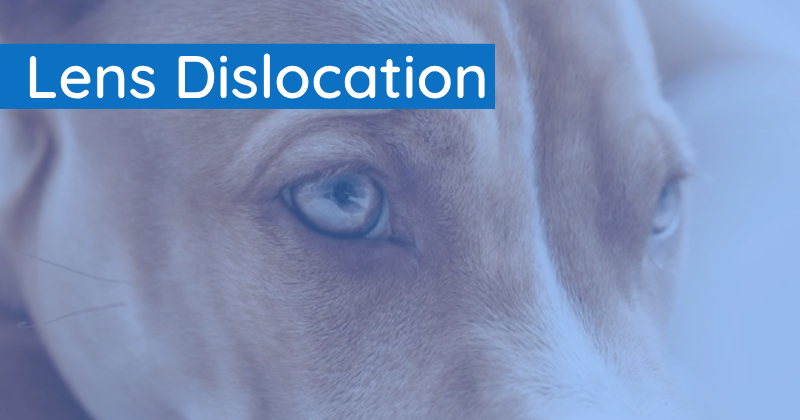Seeing Clearly Through Lens Dislocation

What is it?
The lens is a transparent structure that sits in the middle of the eye, it is responsible for focusing light onto the back of the eye. It is held in place by fine ligaments. Lens dislocation occurs when these fine ligaments break, allowing the lens to float freely in the eye. An inherited defect can cause this to happen in some breeds, while in other cases, it may be due to inflammation in the eye or trauma.
When lens dislocation occurs, it may either fall backward behind the iris or forward into the front portion of the eye. If the lens falls backward, it tends to not cause too many problems other than blurred vision. However, when the lens falls forward, it can cause serious damage to the eye, potentially resulting in vision-threatening and painful conditions such as glaucoma.
How is it treated?
If the lens has fallen backward and the eye is otherwise healthy, we will use medications to constrict the pupil and ‘trap’ the lens in the back part of the eye. It is crucial that doses of this medication are not missed, as skipping doses may result in the lens moving forward into the front of the eye.
If the lens has fallen forward into the front of the eye, we have two treatment options. We can attempt to move the lens into the back part of the eye and manage it with drops, as described above, though this is not always successful. The alternative option is surgical removal of the lens from the eye, which is a day procedure performed at high magnification under the operating microscope.
In cases where the lens dislocation has caused irreversible damage to the eye, we may need to consider removal of the eye or another salvage procedure.
What to expect after surgery?
After lens extraction surgery, patients will be discharged with both oral medications and eye drops. An e-collar will need to be worn. We conduct a post-operative checkup two weeks after the surgery. Several post-operative checks will be required over the next few months to ensure proper healing. Generally, vision will be maintained, although the removal of the lens will make your pet long-sighted. The success rate of the surgery is around 80%.
How can we help?
Our experienced veterinary team can diagnose, manage, and perform high-level lens dislocation surgery.
Want to know more about our ophthalmology services?
